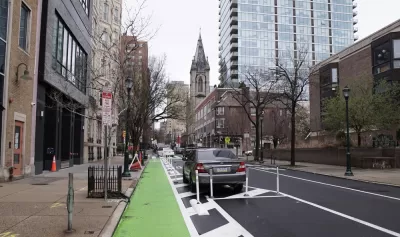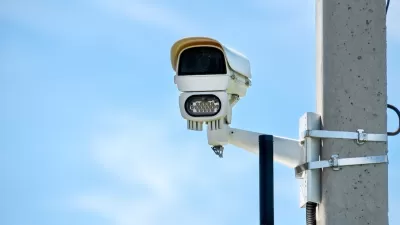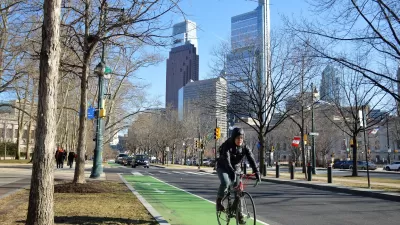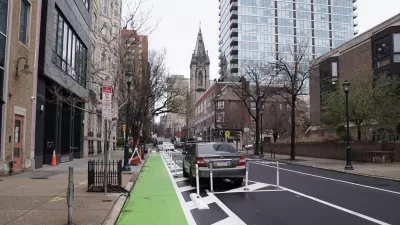City officials say serious crashes are down by 34 percent on streets that were the target of Complete Streets projects.

According to Philadelphia city officials, crashes with fatalities or serious injuries are down 34 percent on streets that received traffic calming projects, reports Thomas Fitzgerald in The Philadelphia Inquirer.
“That conclusion was based on comparing crash data on 35 stretches of roadway where the city or PennDot has built traffic-calming features with the number and severity of collisions on similar streets that were not changed,” Fitzgerald explains.
Anecdotally, residents living near the Cobb Creek Parkway, one of the streets that received a safety overhaul in 2021, say traffic is noticeably more tame.
The safety projects are part of Philadelphia’s Complete Streets initiative, which includes road diets, separated bike lanes, and Neighborhood Slow Zones, focused especially around schools. “Since the first two [Neighborhood Slow Zones] were installed in Fairhill and around Willard Elementary School in 2022, the zones have had no fatal or serious injury crashes. All reported crashes in the zones are down 75%.”
The city has a reserve of $220 million in state, federal, and local funding to continue building on Complete Streets projects over the next several years.
FULL STORY: Serious car crashes down 34% on Philly streets with traffic-calming measures, city says

Manufactured Crisis: Losing the Nation’s Largest Source of Unsubsidized Affordable Housing
Manufactured housing communities have long been an affordable housing option for millions of people living in the U.S., but that affordability is disappearing rapidly. How did we get here?

Americans May Be Stuck — But Why?
Americans are moving a lot less than they once did, and that is a problem. While Yoni Applebaum, in his highly-publicized article Stuck, gets the reasons badly wrong, it's still important to ask: why are we moving so much less than before?

Using Old Oil and Gas Wells for Green Energy Storage
Penn State researchers have found that repurposing abandoned oil and gas wells for geothermal-assisted compressed-air energy storage can boost efficiency, reduce environmental risks, and support clean energy and job transitions.

Updating LA’s Tree Rules Could Bring More Shade to Underserved Neighborhoods
A new USC study finds that relaxing Los Angeles’ outdated tree planting guidelines could significantly expand urban tree canopy and reduce shade disparities in lower-income neighborhoods, though infrastructure investments are also needed.

California's Canal Solar Projects Aim to Conserve Resources and Expand Clean Energy
California’s Project Nexus has begun generating electricity from solar panels installed over irrigation canals, with researchers and state agencies exploring statewide expansion to conserve water and boost clean energy production.

HHS Staff Cuts Gut Energy Assistance Program
The full staff of a federal program that distributes heating and cooling assistance for low-income families was laid off, jeopardizing the program’s operations.
Urban Design for Planners 1: Software Tools
This six-course series explores essential urban design concepts using open source software and equips planners with the tools they need to participate fully in the urban design process.
Planning for Universal Design
Learn the tools for implementing Universal Design in planning regulations.
Heyer Gruel & Associates PA
City of Moreno Valley
Institute for Housing and Urban Development Studies (IHS)
City of Grandview
Harvard GSD Executive Education
Salt Lake City
NYU Wagner Graduate School of Public Service
City of Cambridge, Maryland





























